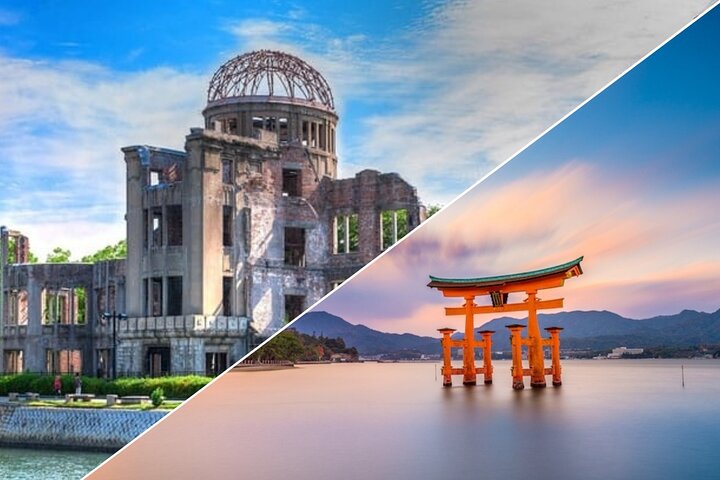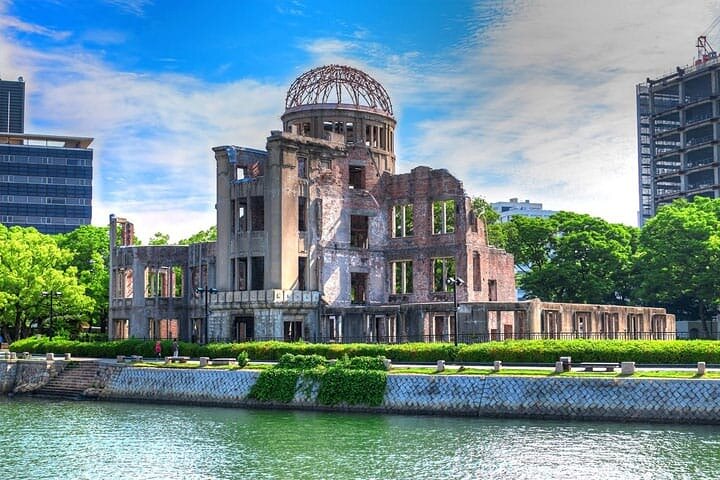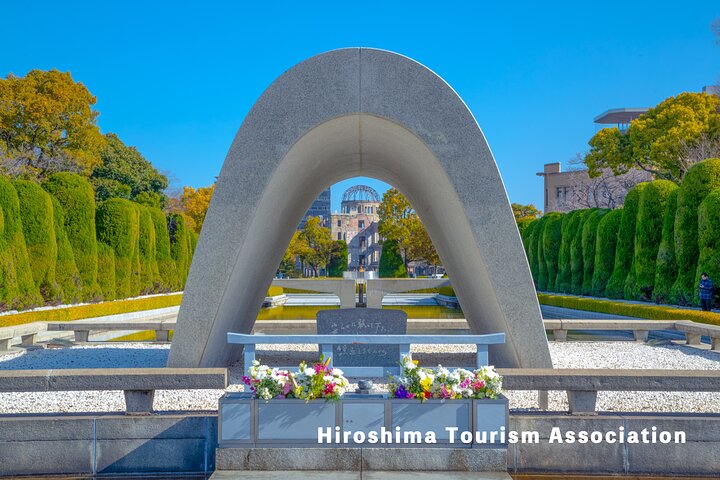Tour riêng
Hiroshima Miyajima Day Tour By Car with English speaking Driver
Tổng quát
Ngôn ngữ có sẵn
48 giờ
Vé di động
Japan is among the top travel destinations in the world, with over 30 million visitors every year. We offer HIROSHIMA & MIYAJIMA 1 Days tour in Japan and we show you rich cultural heritage, beautiful natural settings, historical sights, adventure activities, etc.
Our tour is fully customizable you can add or skip any place.
Hiroshima Miyajima Full Day Tour itinerary
Itinerary is mentioned below:
• Peace Memorial Museum 200 JPY Per Person Entrance Fees
• Hiroshima Castle 370 JPY Per Person Entrance Fees
• Shukkeien Garden 300 JPY per person Entrance Fees
• Miyajima Itsukushima Shrine 300 JPY per person Entrance Fees
• Miyajima O-Torii Gate
• Miyajima Daisho-in Temple
• Ferry to Miyajima costs 200 JPY yen one-way for adults or 400 JPY yen round-trip
Entrances fees is not included please ready JPY cash in hand on the Day of Tour
Thông tin khác
Wheelchair accessible
Infants and small children can ride in a pram or stroller
Service animals allowed
Public transportation options are available nearby
Infants are required to sit on an adult’s lap
Specialized infant seats are available
Transportation options are wheelchair accessible
All areas and surfaces are wheelchair accessible
Suitable for all physical fitness levels
Chính sách hủy
For a full refund, cancel at least 24 hours before the scheduled departure time.
Bao gồm
Private transport only for your group
Highway raid toll tax, Gasoline
Entrance fees or any place or activity
Food drink
Overtime charge 5000¥ per extra hour after 10 hours Hotel to Hotel Time
Điểm đón trả
Điểm đón
Chọn điểm đón
Cần Quan Tâm
Hiroshima Tour itinerary
Hiroshima Peace Memorial Museum
Peace Memorial Museum 200 JPY Per Person Entrance Fees Hiroshima's Peace Memorial Park (平和記念公園, Heiwa Kinen Kōen) is one of the most prominent features of the city. Even visitors not looking for it will likely stumble upon the large park of over 120,000 square meters. Its trees, lawns, and walking paths are in stark contrast to the surrounding downtown area. Before the bomb, the area of what is now the Peace Park was the political and commercial heart of the city. For this reason, it was chosen as the pilot's target. Four years to the day after the bomb was dropped, it was decided that the area would not be redeveloped but instead devoted to peace memorial facilities. Stop At: Hiroshima Peace Memorial Museum, 1-2 Nakajima-cho, Naka-ku, Hiroshima 730-0811 Hiroshima Prefecture
Hiroshima Castle
Hiroshima Castle 370 JPY Per Person Entrance Fees Hiroshima Castle (広島城, Hiroshimajō), also called the Carp Castle, is a good example of a castle built on a plain in the center of a city as opposed to hilltop and mountaintop castles. Its main keep is five stories tall, and its grounds are surrounded by a moat. Also within the castle's precincts are a shrine, some ruins and a few reconstructed buildings of the Ninomaru (second circle of defense). Hiroshima developed as a castle town, whereby the castle was both the physical and economical center of the city. Built in 1589 by the powerful feudal lord Mori Terumoto, Hiroshima Castle was an important seat of power in Western Japan. While it was spared the demolishment that many other castles met during the Meiji Restoration, like the rest of the city, Hiroshima Castle was destroyed by the atomic bomb in 1945. Stop At: Hiroshima Castle, 21-1 Motomachi, Naka-ku, Hiroshima 730-0011 Hiroshima Prefecture
Shukkeien
Shukkeien Garden 300 JPY per person Entrance Fees Shukkeien is a Japanese garden in Hiroshima, designated as one of Japan’s Top 100 Historical Parks and a National Scenic Spot. This article introduces the highlights of the garden, access information, and other tips to enjoy it. Stop At: Shukkeien, 2-11 Kaminobori-cho, Hiroshima Hiroshima Prefecture
Itsukushima Shrine Torii
• Miyajima Itsukushima Shrine 300 JPY per person Entrance Fees While officially named Itsukushima, the island is more commonly referred to as Miyajima, Japanese for "shrine island". This is because the island is so closely related to its key shrine, Itsukushima Shrine, in the public's mind. Like the torii gate, the shrine's main buildings are built over water. Miyajima is a romantic place, best enjoyed by staying overnight at one of the island's ryokan. While there are usually many day tourists, in the evening the area becomes much quieter and more peaceful. There are also wild deer on the island that have become accustomed to people. In the day the deer wander around the same sites as the tourists, and in the evening they sleep along the walking paths. Stop At: Itsukushima Shrine, 1-1 Miyajimacho, Hatsukaichi 739-0588 Hiroshima Prefecture
Itsukushima Shrine Torii
Miyajima (宮島) is a small island less than an hour outside the city of Hiroshima. It is most famous for its giant torii gate, which at high tide seems to float on the water. The sight is ranked as one of Japan's three best views. Stop At: Itsukushima Shrine, 1-1 Miyajimacho, Hatsukaichi 739-0588 Hiroshima Prefecture
A ferry to Miyajima costs 200 yen one-way for adults or 400 yen round-trip, and this is the same for both the JR ferry and the Miyajima Matsudai Kisen ferry from Miyajimaguchi. You'll also need to pay a separate 100 yen Miyajima visitor's tax per person for your visit, which is typically charged at the ferry ticket gate.
Hiroshima Is Just one Day tour no tour 2nd Day
Hiroshima Peace Memorial Museum
Hiroshima and miyajoma is only one day tour by private car. We can pick up and drop off your location
Tùy chọn
2 Days Mt Fuji & Tokyo Tour by car English driver With Pick Up
Pickup included
Trải nghiệm liên quan
Vận hành bởi NIHON HORIZON TOUR

















